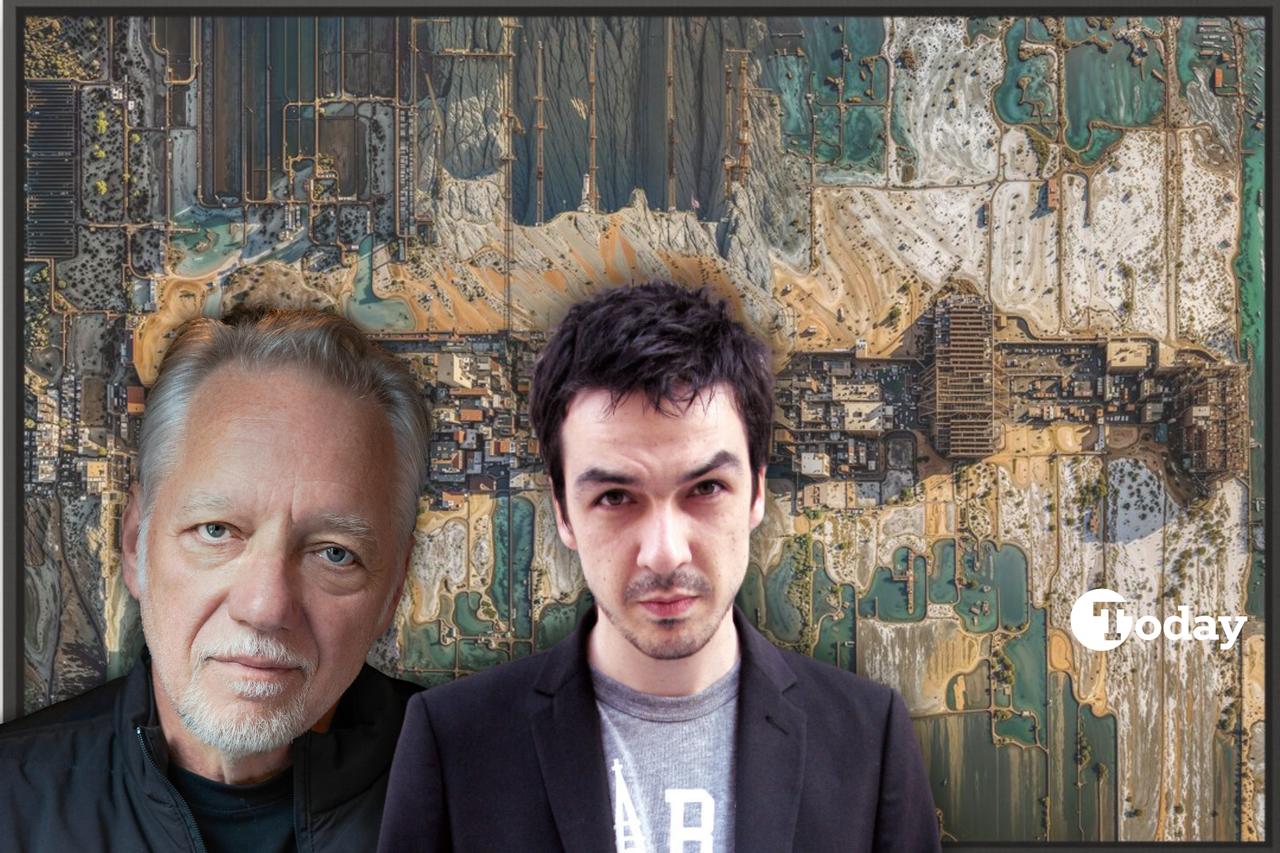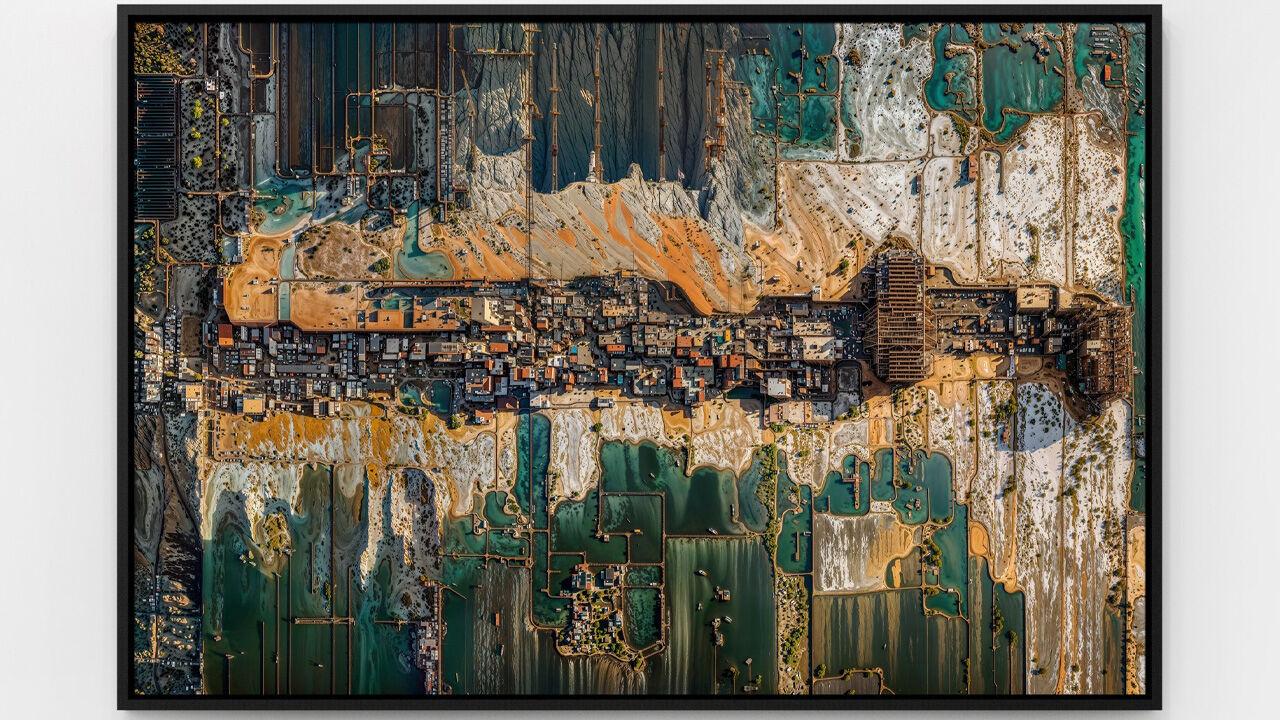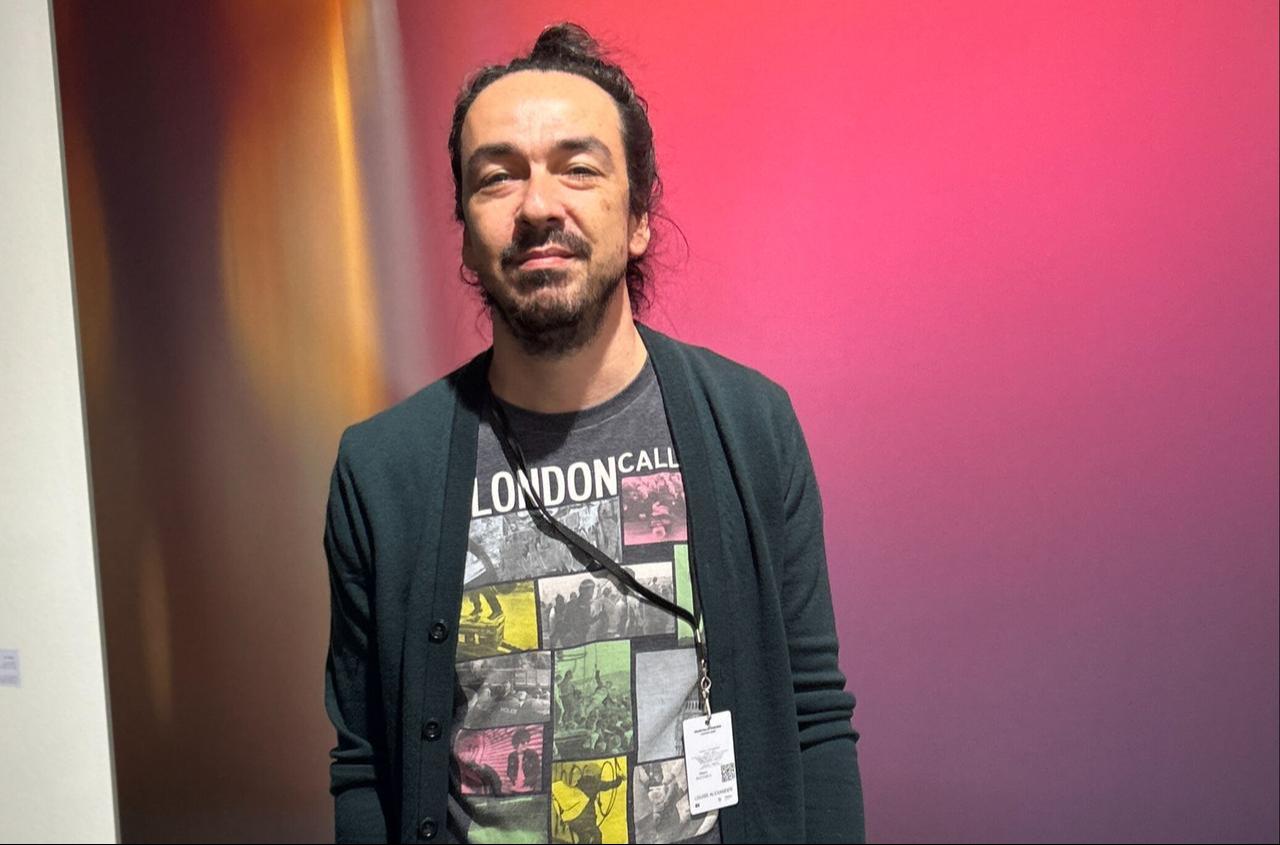
Edward Burtynsky, one of the world’s most renowned names in photography, has spent decades documenting humanity’s impact on nature through his images. Recently, the Canadian photographer crossed paths with Turkish artist Alkan Avcioglu, who has been attracting attention with his work in the field of artificial intelligence.
Last year, Burtynsky, impressed by Avcioglu’s art, collaborated with him to create the joint exhibition Hypertopographics. Opened at Heft Gallery in New York, the show presents the industrial and ecological complexities of today through images produced with the support of artificial intelligence.
On this occasion, Burtynsky and Avcioglu answered our questions.
Burtynsky explained that his collaboration with Avcioglu began after they first met at Paris Photo in 2024. He recalled being immediately drawn to the Turkish artist’s work and recognized that some of his own photographic language had influenced Avcioglu’s approach. Over time, they discovered what he described as a strong “philosophical alignment” between them.
For Hypertopographics, Avcioglu generated the AI-driven images while Burtynsky acted as what he called a conceptual guide, curator, and printmaker. This combination allowed them to merge traditional photographic sensibility with AI’s ability to weave together different scales and perspectives. The resulting works, Burtynsky noted, are “somewhat rooted in reality and slightly beyond it.”

While Burtynsky acknowledged that artificial intelligence is transforming visual possibilities, he rejected the idea that it “opened the door” for him artistically. Photography, he stressed, has never been solely about the tool, whether it is a camera or AI. Rather, it is about perception, interpretation, and response to the world.
He underlined the challenge of ensuring that new technologies contribute to a visual language that deepens understanding rather than simply adding more images to an already saturated visual culture. For him, the human eye and mind remain indispensable to meaningful image-making.
Burtynsky stated that Hypertopographics continues his signature approach of evoking emotions that are both fascinating and unsettling. He and Avcioglu achieved this by merging visual scales that go beyond the limits of human sight or traditional camera systems.
AI, he explained, has the capacity to synthesize realities and project forward, enabling images that hint at possible futures. “What might a landscape look like in 50 years if current trends continue?” he asked, emphasizing that making such futures visible could encourage reflection and, ideally, change.
When asked whether the pieces in Hypertopographics should still be called photographs, Burtynsky described them as “photographically-informed images.”
This distinction highlights the hybrid nature of the works, which balance traditional photographic elements with AI-driven generation.
Looking ahead, Burtynsky admitted it is impossible to predict exactly what photography will become in 100 years. However, he expressed hope that the human eye would remain central to art and image-making.
He argued that photography now plays an even more vital role as both collective memory and cultural conscience. In a world overwhelmed by visual content, the challenge for artists, he suggested, is to create works that cut through the noise and slow people down enough to truly see and think. As he put it, photography’s enduring responsibility is “to bear witness, to question, and to illuminate.”

Turkish artist Alkan Avcioglu described working with Edward Burtynsky as “like a dream,” adding:
“Our collaboration was less about technique and more about a dialogue of ideas. His perspective, shaped by more than forty years of documenting humanity’s industrial footprint on the planet, already intersected conceptually with the visual language I had been developing with artificial intelligence. During our work together, I realized how often we thought alike, and that we shared common goals regarding visual abstraction. For me, this was very special. It was not just about a meeting of photography and AI; it was two perspectives expressing the same concern through different tools.”
Explaining the process of producing the works, Avcioglu continued: “First, we set out to reach a representation of reality that a camera cannot capture, and to push the boundaries of visual perception by merging different perspectives and scales into one vision. Under Edward’s curatorship, I generated tens of thousands of images in a process that brought in various AI tools. Afterwards, Edward joined with his mastery in post-production, shaping the visuals into their final form.”
“Hypertopographics is an attempt to render visible a world that can no longer be represented, a reality beyond the limits of our comprehension,” Avcioglu said. He explained that the title was inspired by the New Topographics movement, but that their project goes far beyond it.
“Today, humanity’s mark on the planet has become so vast, complex, and multi-layered that it is no longer possible to truly grasp it with our eyes alone. This is why we pushed the images into an extreme intensity of representation and detail through AI, establishing a visual language that conveys this sense of being ‘beyond scale.’”